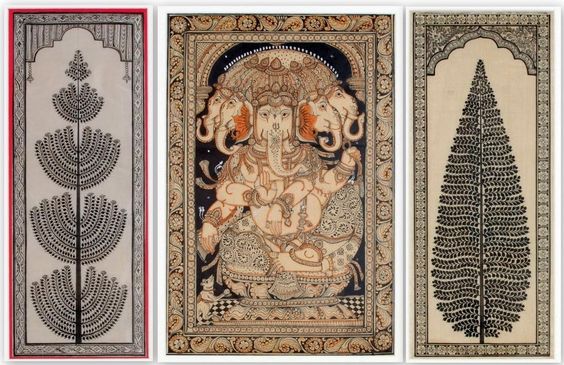TRADITIONAL ART
Traditional art refers to the long-established techniques and styles of creating visual art that have been passed down from generation to generation. These styles are often associated with a particular culture, geographic location, or historical period. Examples of traditional art forms include:
- Painting: including watercolor, oil painting, fresco, tempera, etc.
- Sculpture: including stone carving, wood carving, bronze casting, etc.
- Drawing: including pencil, charcoal, ink, pastel, etc.
- Printmaking: including etching, lithography, woodcut, etc.
- Folk art: including quilting, paper-cutting, knotting, etc.
- Textile art: including weaving, embroidery, batik, etc.
Traditional art styles often feature specific themes, symbolism, and subject matter that are meaningful to the culture or community in which they were created. They may also adhere to certain formal elements, such as the use of certain colors, patterns, or compositions. Despite the evolution of art over time, traditional art forms remain popular and continue to be practiced today, as well as inspiring new forms of artistic expression.
SKETCHING
Sketching is a form of drawing that is typically done quickly and loosely, often used as a preliminary step in the creation of finished artwork. It can be done with a variety of media, such as pencils, charcoal, ink, or markers, and can be performed on paper, canvas, or other surfaces.
The purpose of sketching is to capture the essence of a subject or idea, whether it be a portrait, landscape, still life, or abstract composition. It allows an artist to experiment with different compositions, values, and techniques without the pressure of producing a finished product. Sketching can also be a form of self-expression and relaxation for the artist.
Good sketching skills require practice and a solid understanding of the elements of art, such as line, shape, value, texture, and perspective. A variety of sketching techniques can be used to achieve different effects, such as hatching, cross-hatching, stippling, and blending.
Overall, sketching is an important tool for artists and a valuable skill to have in any form of visual art. It allows for exploration, expression, and growth, and can lead to the creation of truly inspiring works of art.
PAINTING
Painting is a visual art form that involves applying pigments or other mediums to a surface to create a composition. Paintings can be done with a wide range of materials, including oil, acrylic, watercolor, gouache, and encaustic, among others. Painting can also be done on various surfaces, such as canvas, paper, wood, metal, and walls.
Painting can be categorized into different styles and genres, including abstract, impressionism, realism, surrealism, and expressionism, to name a few. Each style has its own unique characteristics, techniques, and philosophies.
The process of painting involves various stages, including planning, sketching, underpainting, color blocking, and detailing. The artist may use brushes, palette knives, sponges, or other tools to apply the paint to the surface. The color and texture of the paint can be manipulated by blending, layering, or thinning with various mediums or solvents.
Painting can be done from observation, imagination, or a combination of both. The subject matter of a painting can be anything from landscapes and still lifes to portraits and abstract compositions. A successful painting usually requires a balance of technical skill, creative vision, and emotional impact.
Paintings have been an important part of human culture for thousands of years, with examples from ancient civilizations such as Egypt, Greece, and China. Today, painting continues to be a widely practiced and appreciated art form, with contemporary artists pushing the boundaries of what is possible and creating new and exciting works of art.
Sculpture is a three-dimensional art form that involves creating forms and shapes by carving, modeling, or casting various materials. These materials can include stone, wood, metal, clay, plaster, or any other substance that can be manipulated and shaped into a desired form. Sculptures can be abstract or representational and can be created in a wide range of styles, from classical to contemporary.
Sculpture has been an important art form for thousands of years, with examples from ancient civilizations such as Egypt, Greece, and Rome. Sculptures can be freestanding or attached to a larger structure or wall, and can be displayed indoors or outdoors. They can be small enough to fit in the palm of a hand or large enough to fill a public square.
Textile art is a type of art form that involves creating art using textiles or fabrics. This can include techniques such as weaving, embroidery, quilting, knitting, or crocheting. Textile art can be two-dimensional, such as a woven tapestry or an embroidered piece of fabric, or it can be three-dimensional, such as a knitted sculpture or a quilted piece of furniture.
Textile art has a rich history and has been an important part of many cultures around the world. From traditional quilts and tapestries to contemporary installations and sculptures, textile art has evolved over time and continues to be a popular form of artistic expression. Textile art can be functional, such as clothing or home decor, or purely decorative and intended for display in a gallery or museum.




Comments
Post a Comment